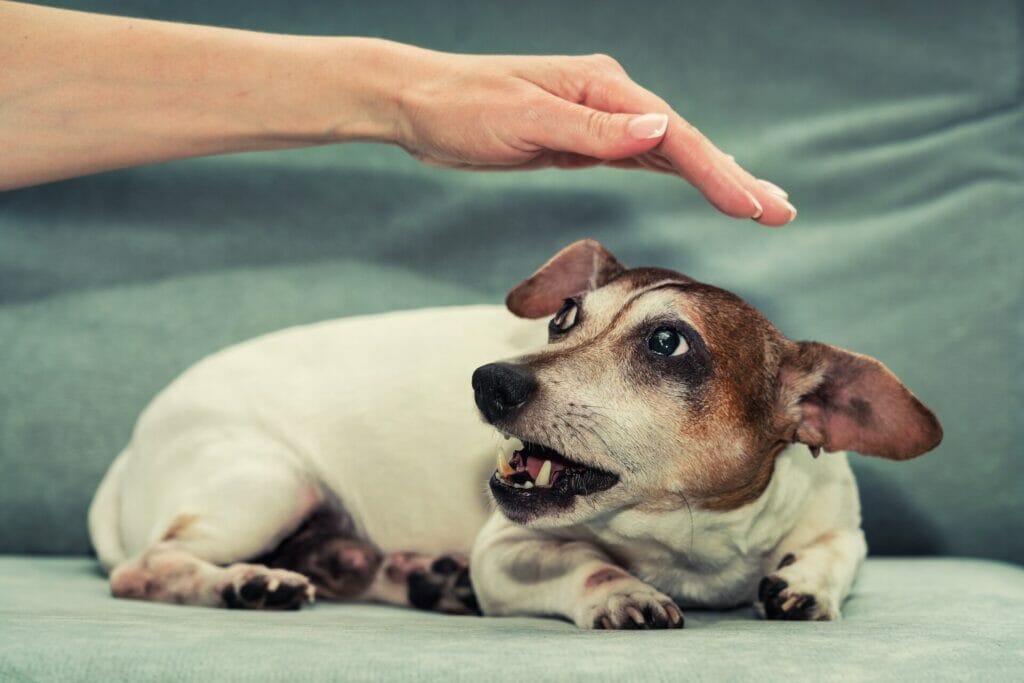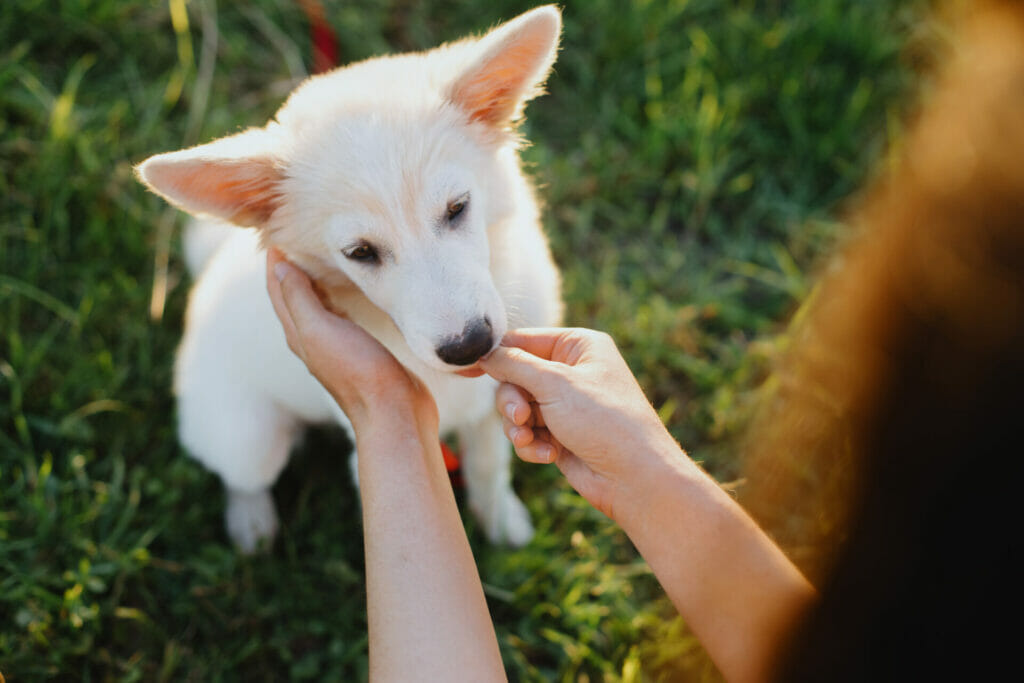There are three responses a dog can display when they feel intimidated or threatened. These responses include flight, fight, and submit. When a dog “fights” in response to something threatening, they exhibit fear aggression.
Fear aggression is when a dog feels the need to appear threatening when presented with someone or something intimidating. For example, a dog may see someone and immediately start lunging and barking at them. The dog feels intimidated by the person and is scared. Instead of fleeing or submitting, the dog fights their fear resulting in fear-aggressive.
Common Causes of Fear-Aggression
Fear aggression is a very particular type of aggression that requires much extra care and thought when helping a fear-aggressive dog. Some common causes of fear aggression include insufficient socialization, inhumane treatment, and attacks from other people, dogs, or other animals.
Avoid Adding Fear and Stress
Fear-aggressive dogs behave the way they do out of fear. So, when working with a fear-aggressive dog, it is essential to avoid adding unnecessary stress or fear. This means that using specific tools like a prong collar or yelling at the dog. The key to helping a dog with fear and aggression is to take things step-by-step in a positive reinforcement method and avoid rushing through the training process.

Start Small and Work Slowly
The best way to help your dog overcome their fear-aggressive is to teach them that nothing bad happens when presented with a trigger. This process must be done in small steps and may take a while. For example, let’s say that you have a fear-aggressive dog that reacts to other dogs. So to help your dog, you invite a friend and their dog to the park for some training. (Try not to bring the trigger into your dog’s personal space, like your home, as this will likely increase their aggression) Your friend is a good distance away from you–far enough that your dog isn’t reacting.
Reward your dog with their favorite treats for staying focused on you as you do some basic obedience. If your dog is doing well, you can gradually reduce the distance. As you move closer to the trigger, be aware of your dog’s behavior and body language. If they are nervous, anxious, or aroused, increase the distance again.
As you repeat this exercise, your dog will eventually realize that nothing bad happens when in the presence of that trigger, in this case, other dogs.
Using Classical Counter-Conditioning
Another way you can help your dog is through classical counter-conditioning. Classical counter-conditioning pairs a pleasurable thing with an undesirable trigger to create a positive response. Let’s use our previous example of having a fear-aggressive dog that reacts around other dogs. Give your dog treats whenever it sees and reacts to another dog. This action may seem counterintuitive as you reward the behavior you want your dog to avoid, but this creates an adverse effect. If you repeat this every time they see a dog, your dog will start associating the other dog, or the trigger, with receiving treats. Eventually, your dog will see the trigger and immediately go to you for treats because, in their mind, dog equals treats. They’ll avoid doing the undesired behavior because they completely forgot about it.

Classical counter-conditioning is an excellent method when helping a fear-aggressive dog because it doesn’t add any fear or punishment.
Advocate For Your Dog
When caring for a dog that struggles with fear-aggression, there are some things you should and should not do to help make their lives a little easier. As their owner, you must advocate for them and avoid stressful situations. For example, if your dog is particularly fearful of strangers, kindly telling someone they can’t approach your dog is the right thing to do. Similarly, if your dog doesn’t like being around other dogs, taking them to a dog park isn’t the best idea.
You should always be aware of your surroundings to avoid triggers or at least notice them before your dog does so you’re better prepared for the situation. Constantly acknowledging your dog’s body language can help you advocate for and guide them through difficult situations.
Caring for a dog that struggles with fear-aggression is not easy. No matter what triggers your dog, watching them react fearfully to everyday occurrences like neighbors doing yard work or friendly dogs wanting to play can be heartbreaking. However, the fact that you are reading this and striving to help your dog through their difficulties means everything and shows how great of a dog owner you are. Follow these tips and be mindful of your dog and their feelings as you set your dog on the path to a stress-free and fulfilling life.




















